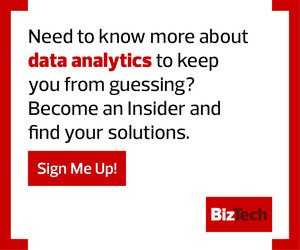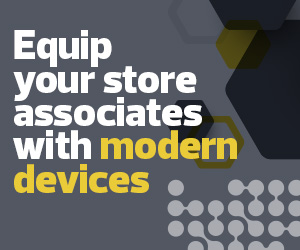In a world where data is being pulled at opposite ends of the spectrum — businesses want to pull valuable insights from their data, but customers don’t want to lose their privacy in the process — it’s becoming increasingly important to balance these two extremes.
One answer to that dilemma is a consumer data platform, a tool that has become popular among marketers to help centralize data for research and analytics while ensuring a clean, privacy-minded result.
This carries benefits for corporate marketing teams in particular, and it just might be the right approach for your organization.
Click below to receive exclusive data content when you register as an Insider.
What Is a Customer Data Platform?
The concept of a consumer data platform first emerged in 2013 in a blog post by marketing technology expert David Rabb. He describes the software as bringing marketing automation to a single central point, rather than aggregating data from a variety of data sources.
“These systems gather customer data from multiple sources, combine information related to the same individuals, perform predictive analytics on the resulting database, and use the results to guide marketing treatments across multiple channels,” Rabb writes. “This differs quite radically from standard marketing automation systems, which use databases built elsewhere and move customers elsewhere.”
Rabb adds that these “customer data platforms offer integrated predictive modeling and complement rather than compete” with existing approaches such as marketing automation.
The concept — exemplified by tools such as Microsoft Dynamics 365 Customer Insights and Adobe’s Real-Time CDP — has evolved in the marketplace and has gained currency as concerns about data security and compliance arise from data breaches, events such as the Cambridge Analytica scandal, and compliance with laws such as the General Data Protection Regulation (GDPR). These factors have made centralized approaches to data management more attractive to marketers, according to Katie Linford, a principal analyst for Forrester.
“Marketing has never had a tool like a CDP before,” Linford says. “One of its core capabilities is to modify customer data and edit the customer record, not just for the data that marketing uses but also for the core source of truth regarding customer data. And this tool has been built for marketing.”
DISCOVER: Why advanced analytics help companies deliver better customer experiences.
How Can CDPs Help You?
CDPs benefit users by centralizing capabilities. They effectively bring together disparate data sources from multiple locations under a single roof. From there, the data is cleaned and unified.
“Having a single source of optimized customer data readily available to systems of insight and engagement allows marketing and sales to better enable the tactics that will grow audience engagement and revenue for their organization,” Linford says.
Is CDP Just a Marketing Tool?
While marketing is generally the primary beneficiary of CDP technology, it is not the only one. A recent study from technology research firm IDC found that while marketing (33 percent) and marketing technology and operations (15 percent) were among the heaviest users of CDP tools, the platform brought value throughout organizations, to areas such as data science, data operations, customer experience and loyalty.
CDP platforms also play a critical role in compliance, Linford adds. For one, it helps organizations centralize data for secure storage, processing and cleaning, and it offers a true source to compare against.
“Most CDPs are able to manage customer consent and preferences,” says Linford. “And this information, stored with the customer data, removes the reliance on having to own and connect to another system to manage consent and preferences.”
CDPs also help marketers simplify and personalize the process to ensure engagement with customers.
EXPLORE: The importance of data compliance and how companies are investing in it.
What Is the Difference Between a CDP and a DMP?
Data management platforms, which gather marketing data for ad targeting, are similar tools that your organization might encounter. DMPs can be used for programmatic ad buying, enabling marketers to centrally store and manage data across segments.
As noted by CMSWire, a CDP can track information on individual customers in a highly compliant and centralized way, whereas a DMP focuses on specific audience segments for data and is based on anonymized information that is then aggregated. A CDP is also a more permanent storage approach compared with a DMP, where data is held only for a few months.
Even though CDPs and DMPs have different specialties, they can work together,” Oracle states. However, if you need “third-party data for short-term customer leads and conversion, you should work with a DMP. If you seek long-term customer engagement that requires first-party data, you should work with a CDP.”
Click the banner below to discover why modernized checkout gives retailers a competitive edge.
CDP Implementation: Cloud Infrastructure Considerations
Whether your goal with a CDP is to target retail customers more narrowly or increase the reach of your marketing campaigns, you ultimately need to ask, what makes the most sense for your organization? Company infrastructure should impact your decision.
A September 2022 Forrester article makes a compelling case for two different CDP approaches. The first, which Analyst Simon Daniels refers to as a “self-build,” would rely on building a bespoke storage mechanism for customer data, utilizing a central data store, a cloud platform such as Amazon Web Services or Google Cloud, or an in-house server.
The second would involve bringing in a Software as a Service approach, such as Microsoft Dynamics 365 Customer Insights, that large consumer-targeted businesses, such as chain restaurants, might rely on.
The rise of tools such as application programming interfaces and Integration Platforms as a Service have made it possible to plug in data from numerous sources, ensuring a high amount of flexibility no matter which path you choose. Just keep in mind that while a custom solution is more work, it does integrate more deeply into your infrastructure.
“A CDP that is not connected to the rest of the infrastructure is still somewhat helpful, but the level of effort to manually move data in and out of the system in a timely manner to allow for audience segmentation, around journey orchestration, and utilizing next best action is very high,” Linford says. “Marketers and technical teams must be able to easily integrate their CDP with technology across their stack.”
Another factor, of course, is ease of use. “The CDP must be easy to use by marketing teams,” she adds.
FIND OUT: Why data and AI are poised to disrupt the world of IT.
CDP Implementation: Security and Compliance Concerns
CDP’s benefits are already strong, but its ability to streamline security and compliance makes it an even more compelling solution. This is partly because GDPR is designed to encourage a compliance-minded approach to data management, where everything is sourced, linked and kept up to date — a reason why marketers find CDPs compelling.
“CDPs have given marketing the power to do something they’ve wanted for years. But this ask hasn’t just come from marketing,” Linford says. It’s something that teams across an organization benefit from. “CDPs have the power to strengthen capabilities across departments, whether it’s the analytics team, the compliance team, or sales,” she adds.
Storing customer data can be a complex task, but whatever your end goal, those needs can admittedly be complex. Bringing in the assistance of a partner like CDW Amplified Data™ services can help you figure out whether having your marketing data in one convenient, trackable place is feasible for your needs.
After all, if you’re pulling from multiple sources, you’ll need a simplified solution to plug in and track your complex data in one centralized platform.













